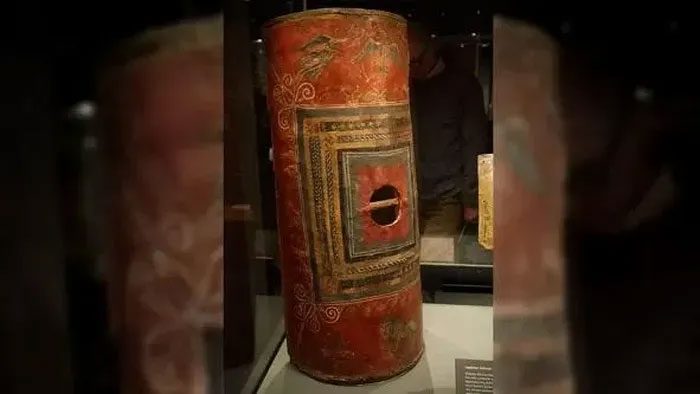A wooden and leather shield dating back to around 250 AD is one of the few complete Roman artifacts ever discovered.
This semi-cylindrical shield is part of the Yale University Art Gallery (USA) collection and is one of the rare surviving artifacts of Roman warrior shields, which were popular from the 4th century BC to the 3rd century AD.

The 1,800-year-old Roman warrior shield was discovered in the ancient city of Dura-Europos in Syria. (Source: Live Science).
The artifact was excavated from the ancient city of Dura-Europos in Syria nearly a century ago and belonged to a Roman soldier who perished in battle.
Very few artifacts of this type of shield have survived over the millennia, despite their frequent depiction in art and film. The shield is constructed from several layers of wood pressed together, forming a surface that is 105.5 cm tall, 41 cm wide, and about 6 mm thick.
The front of the shield is covered with leather, which was then painted. According to the Yale University Art Gallery, “the decorative paintings depict Roman victory symbols, including an eagle with a laurel wreath, the winged goddess of Victory, and a lion.“
The shield was discovered by archaeologists in 1933 beneath a bastion during excavations at the ancient city of Dura-Europos. The Romans incorporated Dura-Europos into their empire in 165 AD, turning it into a trading hub in the eastern part of the Roman Empire. However, the city was abandoned in 256 AD after being attacked by soldiers of the Sasanian Empire (ancient Iran).
Archaeologists found the skeletons of 19 Roman soldiers, weapons, armor, and this shield in a tunnel beneath the bastion. It is likely that these soldiers were trapped and suffocated in the collapsed tunnel. Some experts suggest that Sasanian soldiers ambushed the Romans as they attempted to break out. When the Romans emerged, the Sasanian soldiers used naphtha – an ancient chemical weapon – to suffocate them.
After the battle with the Sasanian forces, the inhabitants of the city fled, and Dura-Europos was gradually buried under desert sand. The site was forgotten until 1920 when American archaeologist James Henry Breasted rediscovered the ancient city.


















































